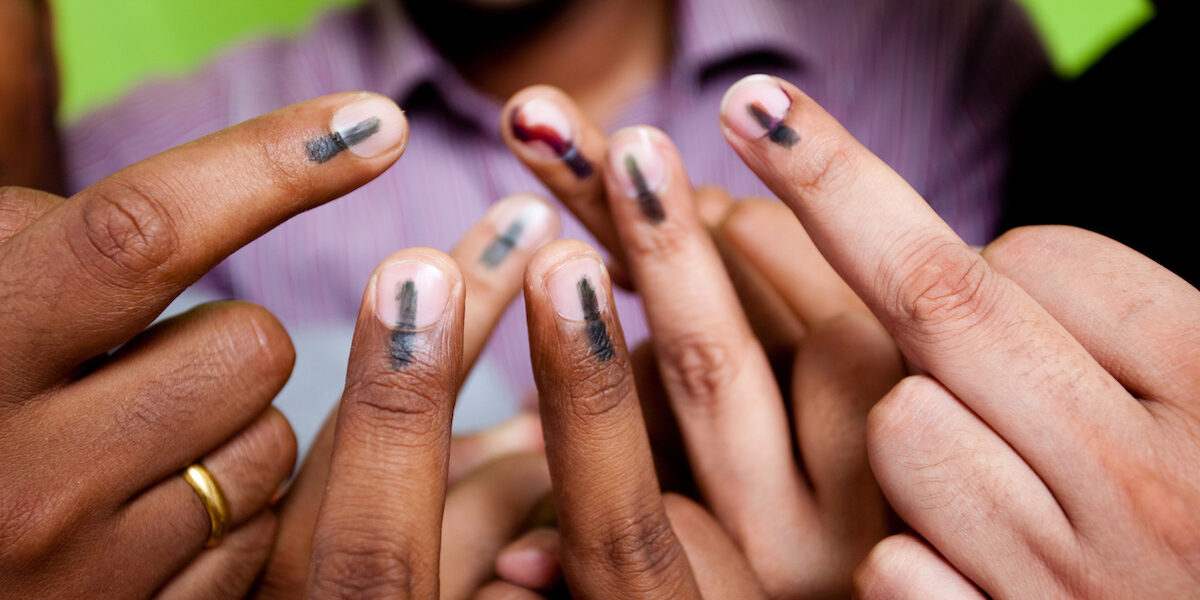The bill proposes significant amendments to the Indian Constitution to create a synchronised election cycle across the country by adjusting the terms of the Lok Sabha and all state legislative assemblies. The bill also grants sweeping powers to the Election Commission and expands Parliament’s authority to make rules related to the electoral process.
Published Dec 19, 2024 | 2:00 PM ⚊ Updated Dec 19, 2024 | 2:58 PM

The One Nation, One Election Bill proposes sweeping amendments to the Constitution (ECISVEEP/X)
The Constitution (One Hundred and Twenty-ninth Amendment) Bill, 2024, popularly dubbed the ‘One Nation, One Election’ bill, was tabled during the winter session of the Lok Sabha on Wednesday, 18 December by the Minister of Law and Justice Arjun Ram Meghwal.
The bill proposes significant amendments to the Indian Constitution to implement the “One Nation, One Election” proposal.
The proposal aims to create a synchronised election cycle across the country by adjusting the terms of elected bodies, namely the Lok Sabha (lower House of the Parliament) and all state legislative Assemblies.
The bill also grants sweeping powers to the Election Commission of India (ECI) and expands Parliament’s authority to make rules related to the electoral process.
Here’s a breakdown of the bill.
The centrepiece of the bill is the insertion of Article 82A into the Constitution, formally establishing the concept of simultaneous elections.
This article defines simultaneous elections as those held concurrently for both the Lok Sabha and all state legislative assemblies.
According to the bill, its provisions will come into force on a date chosen by the Union government, which will announce its commencement through a notification in the Official Gazette.
Following the first general election to the Lok Sabha after the bill’s enactment, the President of India will issue a public notification declaring the date of the first sitting of the newly elected house.
This date, referred to as the “appointed date,” will serve as the reference point for all subsequent elections.
If elections for a state legislative Assembly occur after this date but before the sitting Lok Sabha’s five-year term ends, the Assembly’s term will still conclude on the same date as the Lok Sabha’s. This is to ensure that all state Assemblies’ terms align with that of the Lok Sabha.
To make simultaneous elections legally feasible, the bill redefines the terms of both the Lok Sabha and state legislative Assemblies.
For the Lok Sabha, its “full term” is explicitly defined as five years from the date of its first sitting after a general election.
If the Lok Sabha is dissolved early, the remainder of its original five-year term will be considered its “unexpired term.”
In such cases, if midterm elections are conducted, the newly elected Lok Sabha will serve only the remaining “unexpired term” rather than a full five-year period.
Similar changes apply to state Assemblies. However, the key difference is that their terms are linked to the first sitting date of the Lok Sabha after a general election, rather than their own.
The bill also gives sweeping powers to the ECI and tasks it with overseeing and managing the entire process.
If the ECI determines that elections for a particular state Assembly cannot be conducted at the same time as the Lok Sabha’s, it can recommend deferring that state’s election to the President.
In such cases, the term of the Assembly elected after the deferred election will end on the same date as the sitting Lok Sabha. The ECI is required to specify the expiry date of the Assembly’s term.
Furthermore, the ECI can also modify election procedures “as needed” to conduct simultaneous elections. However, the election body is only required to “specify” modifications “by order.”
Another significant feature of the ‘One Nation, One Election’ bill is the amendment to Article 327 of the Indian Constitution.
This article allows Parliament to make laws related to elections, including electoral rolls and the delimitation of constituencies.
The new bill expands this power by adding the phrase “conduct of simultaneous elections” to the article. This explicitly authorises Parliament to create legislation governing how simultaneous elections should be conducted, establishing a legal framework for managing election timelines, procedures, and related “administrative tasks.”
The bill draws on historical precedent and expert recommendations to justify the proposed constitutional amendments.
It references the simultaneous elections held between 1951 and 1967, terming them a success, and further cites recommendations from the Law Commission of India, the Parliamentary Standing Committee on Law and Justice, and a High-Level Committee chaired by former President Ram Nath Kovind.
These bodies have argued that holding elections together would reduce election-related costs, minimise disruptions caused by the Model Code of Conduct, and allow governments to focus on development and governance rather than continuous electoral campaigns.
(Edited by Dese Gowda)
